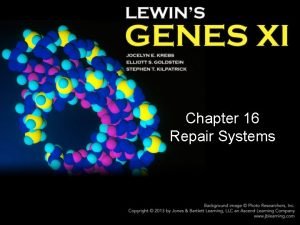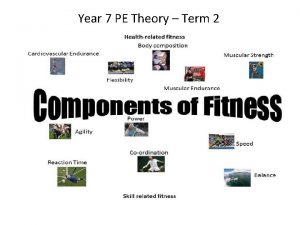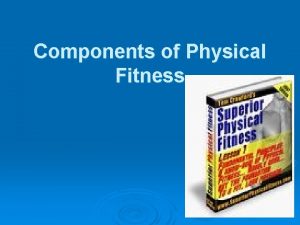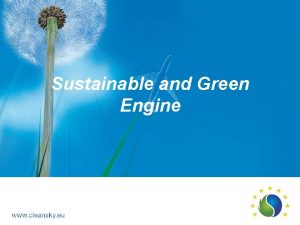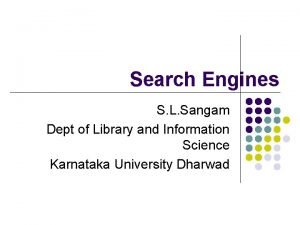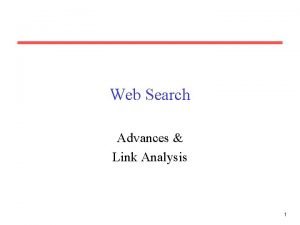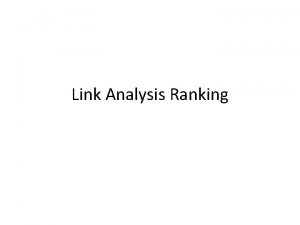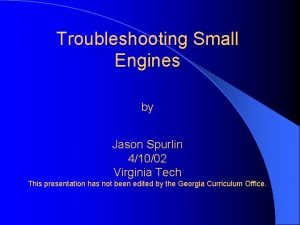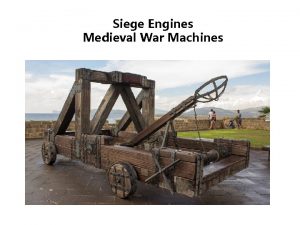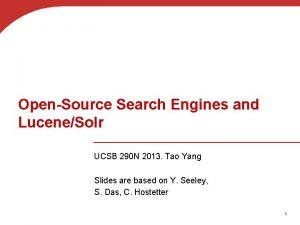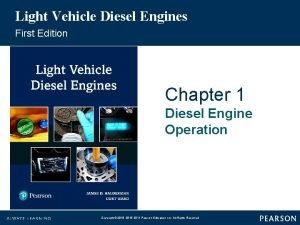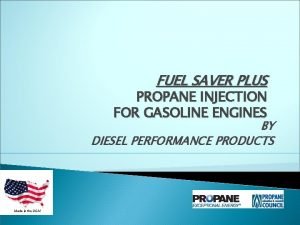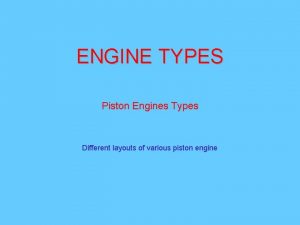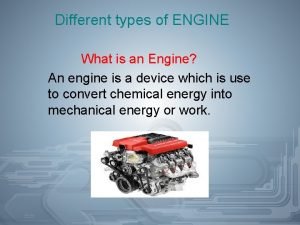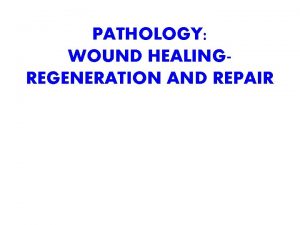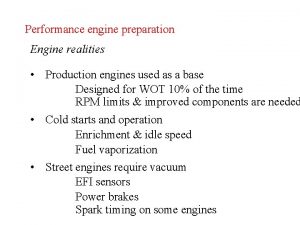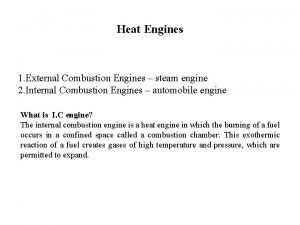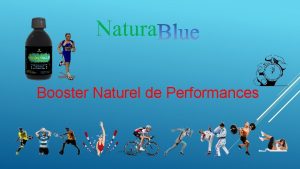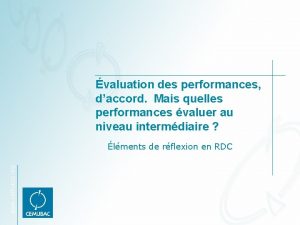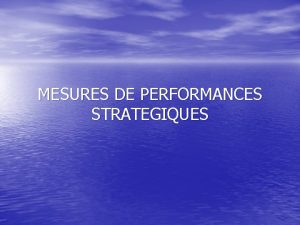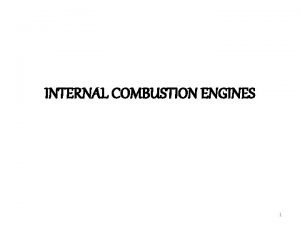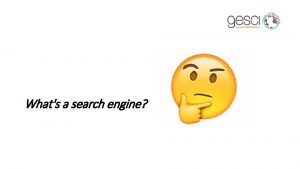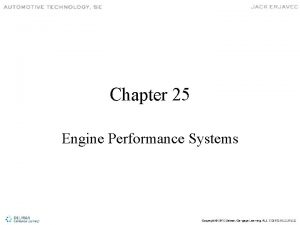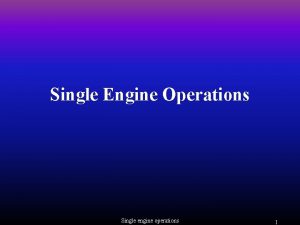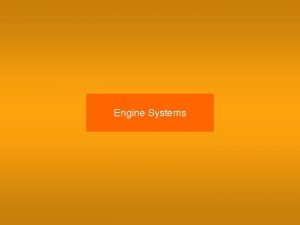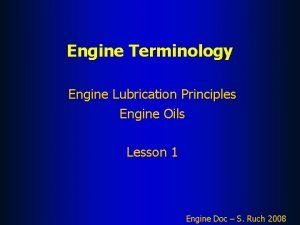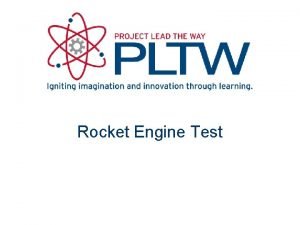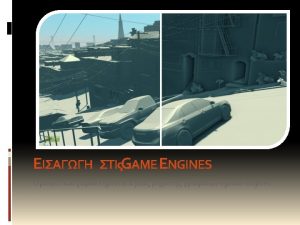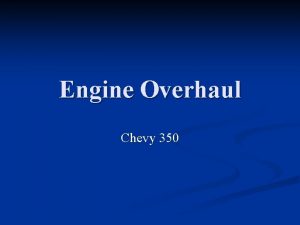Engines Performances and Repair Engine Performance Engine Performance



















- Slides: 19

Engines Performances and Repair

Engine Performance • Engine Performance : It is a indication of the degree of success with which it does its assigned job, i. e. conversion of chemical energy contained in the fuel into the useful mechanical work • Power : Power is defined as the rate of doing work. • Indicated Power : The total power developed by combustion of fuel in the combustion chamber. • Mean Effective Pressure : It is defined as hypothetical pressure which is thought to be acting on the piston throughout the power stroke • Volumetric Efficiency : It is defined as the ratio of actual volume to the charge drawn in during the suction stroke to the swipt volume of the piston • Fuel Air Ratio : It is the ratio of the mass of fuel to the mass of air in the fuel air mixture. 2






GENERAL ENGINE DIAGNOSIS 1. Verify the driver’s complaint and/or road-test the vehicle; determine needed action. 2. Determine if the no-crank, no-start, or hard starting condition is an ignition system, cranking system, fuel system, or engine mechanical problem. 3. Inspect the engine assembly for fuel, oil, coolant, and other leaks; determine necessary action. 4. Listen to engine noises; determine needed action. 5. Diagnose the cause of excessive oil consumption, coolant consumption, unusual engine exhaust color, odor, and sound; determine needed action. 6. Perform engine vacuum tests; determine needed action. 7. Perform cylinder power balance tests; determine needed action. 8. Perform cylinder compression tests; determine needed action. 9. Perform cylinder leakage tests; determine needed action.

CYLINDER HEAD AND VALVE TRAIN DIAGNOSIS AND REPAIR 1. Remove cylinder heads, disassemble, clean, and prepare for inspection. 2. Visually inspect cylinder heads for cracks, warpage, corrosion, leakage, and the condition of passages; determine needed repairs. 3. Inspect and repair damaged threads where allowed; install core and plugs. 4. Inspect, test, and verify valve springs for squareness, pressure, and free height comparison; replace as necessary. 5. Inspect valve spring retainers, rotators, locks/keepers, and lock grooves. 6. Replace valve stem seals. 7. Inspect valve guides for wear; check valve stem-to-guide clearance; determine needed repairs. 8. Inspect valves and valve seats; determine needed repairs. 9. Check valve spring installed (assembled) height and valve stem height; determined needed repairs.

CYLINDER HEAD AND VALVE TRAIN DIAGNOSIS AND REPAIR 10. Inspect pushrods, rocker arm pivots, and shafts for wear, bending, cracks, looseness and blocked oil passages; repair or replace as required. 11. Inspect and replace hydraulic or mechanical lifters/lash adjusters. 12. Adjust valves on engines with mechanical or hydraulic lifters. 13. Inspect and replace camshaft(s) (includes checking drive gear wear and backlash, end play, sprocket and chain wear, overhead cam drive sprocket(s), drive belt(s), belt tension, tensioners, camshaft reluctor ring/tone-wheel, and variable valve timing components). 14. Inspect and measure camshaft journals and lobes; measure camshaft lift. 15. Inspect and measure camshaft bore for wear, damage, out-of-round, and alignment; determine needed repairs. 16. Inspect valve timing; time camshaft(s) to crankshaft. 17. Inspect cylinder head mating surface condition and finish; reassemble and install gasket(s) and cylinder head(s); replace/torque bolts according to manufacturers’ procedures.

ENGINE BLOCK DIAGNOSIS AND REPAIR-a 1. Disassemble engine block and clean and prepare components for inspection. 2. Visually inspect engine block for cracks, corrosion, passage condition, core and holes, and surface warpage; determine needed action. 3. Inspect and repair damaged threads where allowed; install core and gallery plugs. 4. Inspect and measure cylinder walls; remove cylinder wall ridges; hone and clean cylinder walls; determine need for further action. 5. Visually inspect crankshaft for surface cracks and journal damage; check oil passage condition; measure journal wear; check crankshaft sensor reluctor ring (where applicable); determine needed action. 6. Inspect and measure main bearing bores and cap alignment and fit. 7. Install main bearings and crankshaft; check bearing clearances and end play; replace/retorque bolts according to manufacturers’ procedures. 8. Inspect camshaft bearings for unusual wear; remove and replace camshaft bearings; install camshaft, timing chain, and gears; check end play.

ENGINE BLOCK DIAGNOSIS AND REPAIR-b 9. Inspect auxiliary (balance, intermediate, idler, counterbalance, or silencer) shaft(s) and support bearings for damage and wear; determine needed action. 10. Inspect, measure, service, repair, or replace pistons, piston pins, and pin bushings; identify piston and bearing wear patterns that indicate connecting rod alignment problems; determine needed action. 11. Inspect connecting rods for damage, alignment, bore condition, and pin fit; determine needed action. 12. Inspect, measure, and install or replace piston rings; assemble piston and connecting rod; install piston/rod assembly; check bearing clearance and sideplay; replace/retorque fasteners according to manufacturers’ procedures. 13. Inspect, reinstall, or replace crankshaft vibration damper (harmonic balancer). 14. Inspect crankshaft flange and flywheel mating surfaces; inspect and replace crankshaft pilot bearing/ bushing (if applicable); inspect flywheel/flexplate for cracks and wear (includes flywheel ring gear); measure flywheel runout; determine needed action. 15. Inspect and replace pans, covers, gaskets, and seals. 16. Assemble engine parts using formed-in-place (tube-applied) sealants or gaskets, according to manufacturers’ specifications; reinstall engine

Two technicians are diagnosing a problem with an OHV V-8 with flat-bottom lifters. The valve covers have been removed and the engine is running. One pushrod is not rotating. Technician A says that the camshaft is worn and must be replaced. Technician B says that the lifter is worn and must be replaced. Which technician is correct? a. A only b. B only c. Both A and B d. Neither A nor B


Exhaust colour ? Technician A says that black exhaust smoke is an indication of a toorich air-fuel mixture. Technician B says that white smoke (steam) is an indication of coolant being burned in the engine. Which technician is correct? a. A only b. B only c. Both A and B d. Neither A nor B

Oil consumption An engine uses an excessive amount of oil. Technician A says that clogged oil drain-back holes in the cylinder head could be the cause. Technician B says that worn piston rings could be the cause. Which Technician is correct? a. A only b. B only c. Both A and B d. Neither A nor B

CYLINDER HEAD AND VALVE TRAIN DIAGNOSIS AND REPAIR The setup shown is being used to check __. a. valve spring installed height b. valve stem height c. valve spring squareness and free height d. valve spring tension

Cylinder head straightness A 0. 015 inch feeler gauge is able to be inserted between the straight edge and the cylinder head. What should the service technician do? a. Reinstall on the engine if a copper gasket is used b. Resurface or replace the cylinder head c. Grind the valves and seats and reinstall the cylinder head on the engine d. Clean the head surface with brake cleaner and sandpaper to remove any dirt and reinstall on the engine

Coolant passages in the cylinder head should be inspected for _______. a. corrosion b. restrictions (blockages) c. leakage d. All of the above
 Base excision repair
Base excision repair Base excision repair vs mismatch repair
Base excision repair vs mismatch repair Musical ensembles and types of performances in malaysia
Musical ensembles and types of performances in malaysia The ability to undertake strength performances quickly
The ability to undertake strength performances quickly The ability to do strength performances at a rapid pace
The ability to do strength performances at a rapid pace Karta e performances
Karta e performances Chapter 5 principles of engine operation
Chapter 5 principles of engine operation Sage game engine
Sage game engine Gopher search engine history
Gopher search engine history Link analysis
Link analysis Engines link analysis and
Engines link analysis and Troubleshooting small engines
Troubleshooting small engines Medieval war machines
Medieval war machines Knowledge search engines
Knowledge search engines Meta search engine definition
Meta search engine definition Open source search engines
Open source search engines Light vehicle diesel engines
Light vehicle diesel engines Fuel saver plus
Fuel saver plus Different types of engines
Different types of engines What is engine displacement
What is engine displacement

